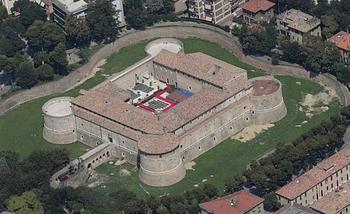I making a experiment...
Re: Project: Festival book 1475
51I making a experiment...
When a man has a theory // Can’t keep his mind on nothing else (By Ross)

No. I am research in process. In any case, it seems that his theories were in vogue. I'll read it his treatise.but is he mentioned in the text?
I don know another Licaste. But is danger. Thats name is not in the old edition (fol. 36, lost). I found it in the nineteenth century edition, which has errors. Be careful.So Licaste should be female. Daughter of Priamos?
We have Bessarion between the 28 famous men. Likely there were not too much persons, which Montefeltro actually knew. And not much living persons, if any. Was he himself between them ? Justus von Gent made a Sixtus portrait, was it included between the 28? Was he between them? How many persons we might exclude from the 28 as modern and how many are "old"? Perhaps we get the relation 24+4 ?No. I am research in process. In any case, it seems that his theories were in vogue. I'll read it his treatise.
It's an idea, but this sounds too complicated, I would assume.Another cuestion...
It is 1475. Niccolò di Antonio degli Agli write de codex (http://www.italica.rai.it/rinascimento/ ... ozzesf.htm).
We have numbers odd, male in neoplatonic matecosmic, and pairs, females. And we have music (Gaffurio, spheres music), and cosmic dance... well. Perhaps we need think in 1, 2, 3, 4, 9, 8, 27 and triads, and circles or triangles.

When the Aragonese wedding entourage arrives the city, the bride has first to stay one night outside (probably a rule) ... I guess, that this happens in Castello Novilara. Costanzo visits the castle, but isn't allowed to see Camilla. Diana = Chastity hinders him. That's a scene for the pair Mars-Diana, which appears in the banquet.A. Friday 26 - A procession to the Castle Novillara (Fols. 1/5)
1. Diana the Huntress greets Constantia. (Fols. 2)
2. Constantia arrive at first triumphal arch. (Fols. 3 and following)
= AIRF. Monday 29 - the parade of gifts (Fols. 46/60).
Upon awakening going to the Great Hall.
1. First Mountain. Enter an artificial mountain. = EARTH
1.1. The dances of "wild man" (humo selvatico) and lyon. (Fols. 46) = FIRE
1.2. The dances of two young men (buskers?). (Fols. 47) = WATER
1.3. Ten youngs (5 dresses in green, and 5 dress in alesandrina silk) dancing acrobatic. (Fols. 47)


Yes, this is one argument.mmfilesi wrote:I need time. I cant answer quickly. But, I think it's good to know what relationship Constantia and Camilla With Castor and Pollux. They are the passive agents. Castor and Pollux receive the emblems, the gifts of the gods and give them to the bride and groom. "The wedding was held in May? Gemini: May 22-June 21
